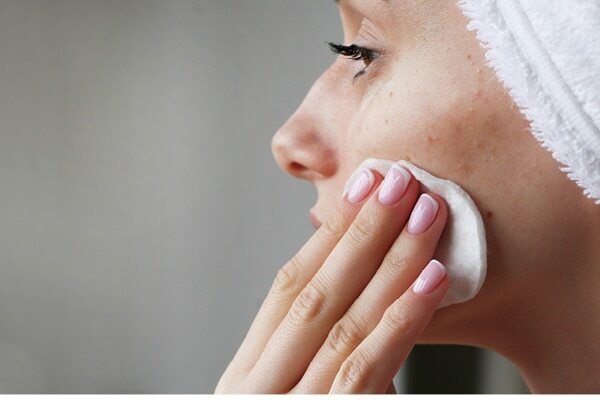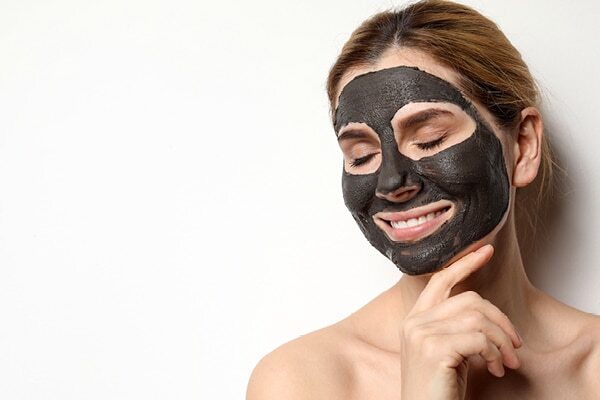Acne cannot be defined as a one-size-fits-all condition, it exists on a broad spectrum. On one end, you have relatively mild and easily treatable comedonal acne, and on the other, you have conditions like cystic acne that cannot be treated without clinical intervention. But even though comedonal acne is nothing too major to stress about, some might still fail to properly deal with it. If the conditions around comedonal acne are made worse, they can turn into fully inflamed blemishes that are difficult to treat and often leave a scar behind. So, in order to make the condition more manageable and even prevent it in the first place, we contacted our in-house expert Dr. Sravya C Tipirneni; and here's what she had to say...
01What is comedonal acne

Before getting into the specifics, let's detail what comedonal acne actually is. 'Comedone' is the name given to small, skin-coloured or darker-coloured acne papules. They usually develop on the forehead and the chin, sometimes on the cheeks as well. The two most common types of comedonal acne are blackheads and whiteheads. While blackheads are open comedones, whiteheads are the closed ones. You can also classify comedonal acne based on the size -
- The ones which are invisible to the eye and called micro-comedones
- Larger comedones are called giant blackheads or giant comedones
- Whiteheads are referred to as macro-comedones
02How to identify comedonal acne

In order to** identify comedonal acne**, we need to look at them in detail, starting with blackheads -
- Blackheads are basically open comedones. When the melanin pigment, which is found in the sebum produced by your oil glands, comes in contact with the environment near the opening of pores, it oxides and turns dark in colour. This is why the blackheads have a dark colour.
- Whiteheads, on the other hand, are closed on the surface and look like small skin-coloured or flesh-coloured dots, but they feel bumpy to touch. Whiteheads are also responsible for making areas of the skin around them very rough. Comedonal acne can also be identified by mapping your face and marking out the sites where you notice the bumps. Comedones are more frequent in the areas of your face that have a higher number of oil glands. This means the T-zone - on the forehead, nose and chin. Comedonal acne also occurs due to hormonal fluctuations that lead to disruption in the harmony of your sebaceous glands. So, if you do notice bumps on your jawline during your period (that are not cystic in nature), they are most likely to be comedonal acne.
03How does it occur and what are the risk factors

Your skin cells normally shed at the surface, in a process called the skin turnover cycle or cell turnover cycle, and allow new skin cells to form. Sometimes these dead skin cells or debris get trapped within the hair follicles on your skin and when combined with the natural secretion of oils (sebum), your pores can get plugged and clogged. Typical blackheads and whiteheads are caused by this trapping of hair follicles, skin residue and debris in the pores. Some of the risk factors that can be associated with comedonal acne can help identify and manage the condition as well. It is common with people who consume high amounts of dairy products or a diet that has a lot of fats and sugars. Over hydrating and over moisturising of the skin with the wrong products, or use of improper ingredients like petroleum jelly can cause comedones as well. Environmental factors like very humid weather and skin habits like picking on the skin, touching or popping the comedones can also cause more damage.
04Expert recommended medical treatments for comedonal acne

The principle behind treating comedonal acne is to understand the root cause first. Some of the common triggers of comedonal acne are -
- Excessive sebum production
- Improper moisturising habits
- A profession which exposes your skin to too much oil
- Improper cleansing and exfoliation of skin, and others. The common treatments that Dr. Tipirneni revealed aims to control comedonal acne by decreasing the oil and sebum production on the skin. These are topical applications of azelaic acid, benzoyl peroxide, retinoids, glycolic acid and salicylic acid. While dermatologists rely on these topical treatments majorly, they may also give oral medications if necessary. Isotretinoin is very good for comedonal acne when given in the right dosage and with consent to people who are properly informed of its potential side effects. Some of the other methods of treatment are physical methods or dermato-surgical methods like comedonal extractions, micro-dermabrasion, and chemical peels. The procedures work to remove the comedones before they turn into very advanced forms of acne.
05Expert recommended tips to manage comedonal acne

Dr. Tipirneni revealed some tips and tricks to develop a good skin care routine to help manage and prevent comedonal acne-
- Always have a good cleansing and moisturising routine in place that is regular and consistent.
- Wash your face with a gentle yet effective AHA or BHA infused face wash for 30 seconds, do not scrub too much.
- A toner with an alcoholic base can be helpful for comedogenic skin.
- Use a water-based or gel-based and very light, non-comedogenic moisturiser after cleansing. Also, try to wash your face once in the mid-day so that it's not too oily and you are not waiting till the end of the day to get rid of the oiliness.
- Remove your make-up at the end of the day. Also make sure to wash off sweat and residue after working out.
- Use formulations with built-in sunscreen so that you do not have to layer on a thick sunblock on top of all your products.
- Always consume good dietary protein to avoid a lot of added sugars, fats and dairy in your diet - these worsen the inflammation which is one of the causes of the comedones. So, try to avoid processed foods and sweets as much as you can.
- If nothing is working, please go to a licensed dermatologist before it turns into severe inflammation and get the comedones removed as soon as possible.
06Home remedies for comedonal acne

Some of the natural remedies that you can try for comedonal acne are simple. Ingredients like tea tree oil, clay masks and charcoal masks can help. Tea tree oil has an anti-inflammatory effect and also reduces sebum, so you can use medications or products containing tea tree oil. Mattifying masks work well to dry out the sebum in your pores. They also help extract trapped dirt and make the blackhead removal easier. However, make sure to consult your dermatologist before using home remedies as some people can be allergic to them and this can make the condition worse.
07FAQs for comedonal acne

Q. How do non-comedogenic products help comedonal acne?
**A. **Some of the common comedogenic ingredients that can make your acne worse are coconut oil, vitamin A & D additives, lanolin, almond oil, ascorbyl palmitate, apricot kernel oil, beeswax, and avocado oil. Using these products can overwhelm already troublesome skin. This is why non-comedogenic products that are formulated with ingredients that won't clog your pores, can help upgrade your skincare routine to keep it pore-friendly. Non-comedogenic products can help avoid developing comedonal acne in the first place.
Q. How to use retinol for comedonal acne?
**A. **Retinoids are vitamin A derivatives that can help faster skin cell turnover, boost cell metabolism, and control inflammation to continually heal and repair acne-damaged skin. Retinols should be used under the careful guidance of a dermatologist as mixing it with other topicals like benzoyl peroxide and salicylic can be too irritating for the skin. However, these topicals can be used in separate skincare routines, with retinol recommended to be used at night for better absorption and results.
Q. Can you pop comedonal acne?
**A. **While blackhead and whitehead extractions are very commonly offered in-salon services, they should not be done without an expert aesthetician. Popping comedonal acne at home can be dangerous as it can get inflamed and lead to scarring and further infections. Reach out to a dermatologist to get your comedones removed instead.








